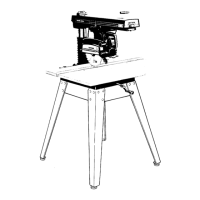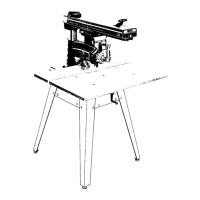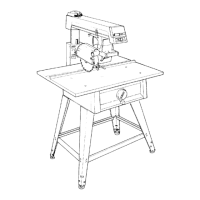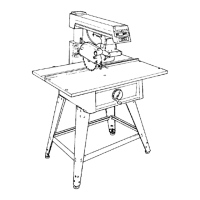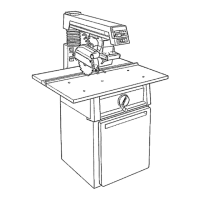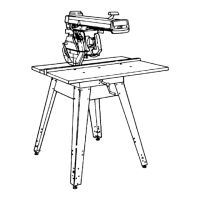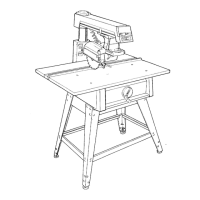electrical connections
An adapter as shown below is available for connecting
plugs to 2-prong receptacles. The green grounding lug
extending from the adapter must be connected to a
permanent ground such as to a properly grounded
outlet box.
GROUNDING LUG
ADAPTER_/_\>,_l
MAKE SURE THIS IS
3-PRONG '_ _ CONNECTED TO A
PLUG __ ,_, KNOWN GROUND
RECEPTACLE
NOTE: The adapter illustrated is for use only if you
already have a properly grounded 2-prong receptacle.
MOTOR SAFETY PROTECTION
NOTE: This motor should be blown out, or "vacuumed",
frequently to prevent sawdust interference with normal
motor ventilation.
1.
2.
3.
This tool should be connected to a 120 volt, 15 amp
branch circuit with a 15 amp time delay fuse or circuit
breaker. Failure to use the proper size fuse can result in
damage to the motor.
If the motor fails to start, turn the power switch to the
off position immediately. UNPLUG THE TOOL. Check
the saw blade to insure that it turns freely and that its
teeth are not wedged into the table top. After the blade
has been freed, try to start the motor again. If, at this
point, the motor still fails to start, refer to the "Motor
Trouble-Shooting Chart."
If the motor should suddenly stall while cutting wood,
the power switch should be turned off, the tool
unpluged and the blade freed from the wood. The
motor may now be restarted and the cut finished.
4.
Frequent opening of fuses or circuit breakers may result
if motor is overloaded, or if the motor circuit is fused
differently from recommendations. Overloading can
occur if you feed to rapidly or if your saw is misaligned
so that the blade heels. Do not use a fuse of greater
capacity without consulting a qualified electrician.
Although the motor is designed for operation on the
voltage and frequency specified on motor nameplate,
normal loads will be handled safely/ on voltages not
more than 10% above or below the nameplate voltage.
Heavy loads, however, require that voltage at motor
terminals equals the voltage specified on nameplate.
Most motor troubles may be traced to loose or
incorrect connections, overloading, reduced input
voltage (such as small size wires in the supply circuit) or
to an overly-long supply circuit. Always check the
connections, the load and the supply circuit, whenever
the motor fails to perform satisfactorily. Check wire
sizes and lengths with the table following.
WIRE SIZES
The use of any extension cord will cause some loss of
power. To keep this to a minimum and to prevent
over-heating and motor burn-out, use the table below to
determine the minimum wire size (A.W.G.) extension cord.
Use only 3 wire extension cords which have 3 prong
grounding type plugs and 3-pole receptacles which accept
the tools plug.
NOTE: For circuits of greater length, the wire size must be
increased proportionately in order to deliver ample voltage
to the saw motor.
Length of the
Conductor
Up to 100 feet
100 feet to 200 feet
200 feet to 400 feet
Wire Size Required
(American Wire Gauge Number)
120 Volt Lines
No. 12
No. 8
No. 6
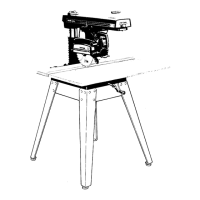
